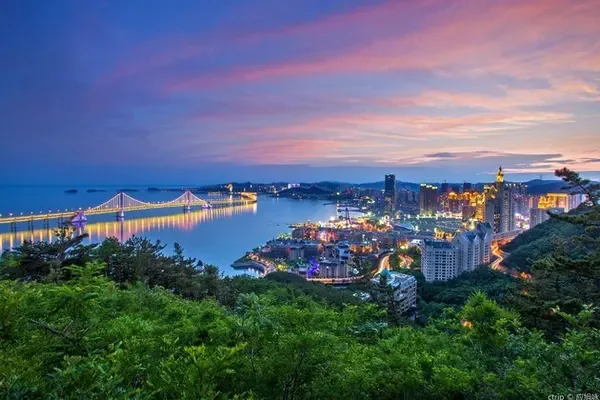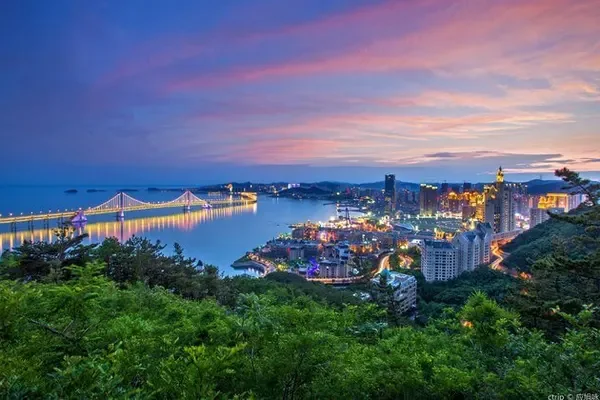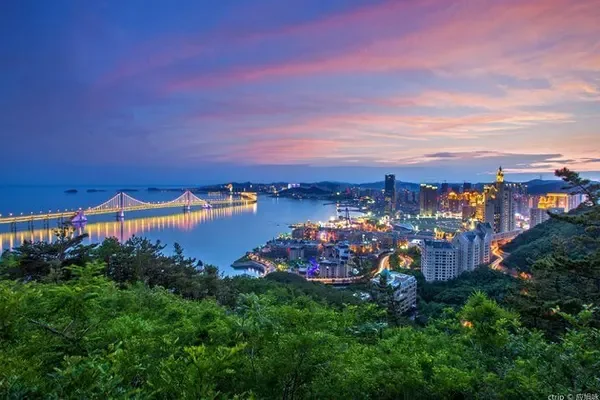★Tourist location: Tianxing Bridge in Huangguoshu, Anshun, Guizhou
From the end of this narrow path, there is Tianxing Lake. We walked the other side of the road again, and the tourists on this road were crowded. Because there are rock walls on both sides of the road, and the road left in the middle is really narrow, most tourists choose this classic path, so the flow of people is still quite large. I actually didn't want to go down this road again, but my friend was very interested, so I walked with him for a while. The flow of people here is very dense, and it is quite difficult to speed up the pace. You can only walk forward with the flow of people. We went retrograde for a while, but still didn't feel ashamed to confront others, so we turned back from Xianren Mountain and walked out along the flow of people.
This section of the road is indeed worth a walk, with many rock walls and lush trees on both sides. Two people walking side by side in a narrow place will feel crowded, and three or five people cannot fit in a wide place. The rock is rugged, and there is a section in the middle that is divided into two strands. Probably when building the road, it was also considered to keep the original appearance of the rock as much as possible, so narrow passages were built on both sides to avoid it.
Going out and arriving at Tianxing Lake again, this road is not too long, but it takes a lot of time. One is that the rocks on both sides are quite interesting, and the other is crowded with people, and it is really not fast.
The water surface of Tianxing Lake is 8,100 square meters. The lake is relatively open, surrounded by mountains, and the scenery is very beautiful. After seeing many trees on rocks and water on rocks in the bonsai garden, my eyes suddenly brightened. Probably because most of the sunlight on the road ahead was blocked by the lush trees, but here the lake is unobstructed, and the sunlight appears warm. This is also the filming location of Gao Laozhuang Zhu Bajie carrying his wife in "Journey to the West". In fact, the scenery is not as good as the bonsai garden.
Gaolaozhuang is a group of antique buildings with pavilions, terraces and corridors. There is also a small fountain in the lake. Although it is only in the shape of a flower umbrella, it also adds a little color to the lake.
From here, the tourists began to divert, and most tourists chose to return halfway. The sign under the eaves reads a warm reminder: "Dear tourists, the following attractions are more exciting! The length of the second half of the tour in Tianxing Bridge Scenic Area is about 2600M, and it takes about 1.5- 2 hours". Needless to say, we of course chose to continue with the second half of our tour.
Not far along the road, I saw a long suspension bridge between two mountains. Fortunately, the bridge deck is made of wooden boards, which are opaque, so there are still tourists who playfully jumped a few times.
There are deep canyons on both sides of the suspension bridge, and the waterfall on the mountain wall winds down. Although the width is not enough, the height is acceptable. Of course, when you look at the waterfall here, you can't help but compare it with Huangguoshu, and it feels a bit inferior in comparison.
Walking to the middle, you can see two confronting peaks, tens of meters apart, each sticking out an "arm", as if affectionate lovers want to touch each other, but they happen to be a punch away , beyond the reach of the arm, can only be called helpless. A boulder seems to have fallen from the sky, big up and down small, just stuck in it, so the two stone arms can be regarded as connected through the stone, this is the "stone bridge in the cloud".
The name "Bridge on Bridge on Bridge" is too impressive, but the bridge is not really amazing. But under the bridge is a stream, the stream is green. The two banks are lush and green, and there is a mountain in the distance.
Walking across the bridge is Tianxing Cave. It used to be an underground underground river, and later this underground cave without water was formed due to the diversion of the river water. The name of Tianxing is the continuation of the name of Tianxing Bridge, but it does not mean that there are Tianxing in the cave.
There is a hall and several side halls in the cave, with an area of 18,000 square meters, a diameter of 150 meters, and a height of 50 meters. The stone pillars in the cave are more than 20 meters high. There are stone flowers all over the pillars, and the light is reflected, and the color is very gorgeous.
As far as the colorful caves are concerned, in fact, most of the karst caves are similar, and Tianxing Cave can only be regarded as relatively small in scale among the caves in Guizhou. The stalactites on the top of the cave have strange shapes and look like gorgeous curtains under the light. The stalagmites grow upwards, almost touching the stalactites at the top. When the two are connected, a stone pillar can be formed.
"Eight Immortals Crossing the Sea" is a cluster of stalagmites scattered on the Liushitan Dam. There are no more and no less, just like eight of different heights, fat and thin, just like Zhang Guolao, Lu Dongbin, Tieguai Li, Han Zhongli, He Xiangu, Lan Caihe, Cao Guojiu, Han Xiangzi.
The "Heavenly Feast" has a large number of colorful dripping stones, cloud dishes, and cloud plates, as if it is a feast held in heaven, and there are too many delicacies.
There are also "Great Wall", "Ice Mountain and Snow Field", "Miao Village Terraced Fields", which are also large-scale stalactite groups. The shapes of birds, insects, fish, animals, fruits and vegetables are much smaller, and you can't really tell them apart for a while.
As for the "lotus pond", there are models and columns. If there are two more stone lotuses, it will be even more suitable for the occasion. Just thinking about it, looking at the stones in the pond, I really imagined the slim lotus.
Out of the Tianxing Cave is Maoshuitan, which is the water emerging from the stone wall of the bridge on the bridge. This is the filming location of the white dragon and horse coming out of the water in the TV series "Journey to the West". It is said that in the high water season, the water will be very turbulent and can form a water column more than two meters high. It's a pity that in June, the water here is not abundant enough.
Under the Maoshuitan is a wide riverbed, the water is clear, with some blue color, flowing downstream mightily. There are a lot of trees planted next to them, and there are things like fruits growing on the roots and trunks of many trees. When we saw them on the tree, we thought they were fruits, but when we saw the roots, there were circles, two circles and three circles... I really don't know what part of the banyan tree it is.
There is a Huangge banyan tree that is very thick and has many branches, which is also the characteristic of banyan trees. When their aerial roots fall on the ground, they will take root.
This is the stone forest area on the water. The so-called "flowing water on the stone, stones on the water, and trees growing on the stone", many scenic spots in Guizhou have similar landscapes.

































































































